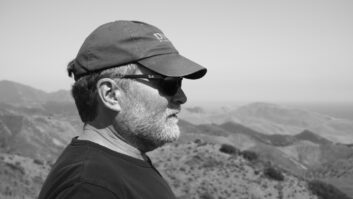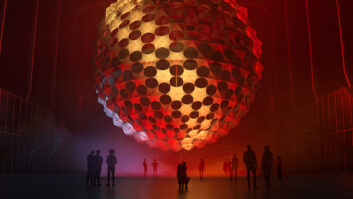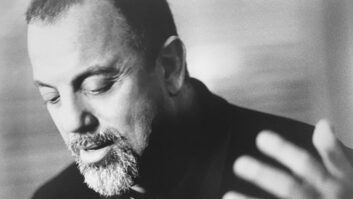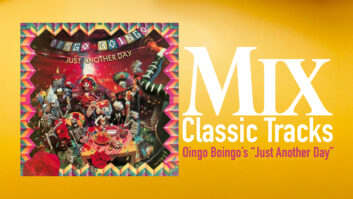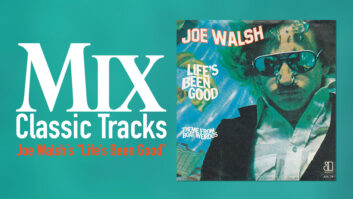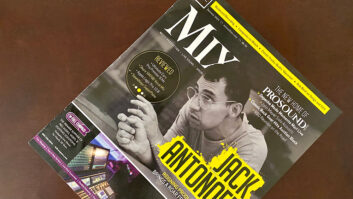Over the past 30 days, which roughly coincides with the cycle of putting together this issue of Mix, I seem to have bounced back and forth from old school to new skool, reverence to discovery, historic to the here-and-now. It wasn’t planned; it just happened. And it all took place in the recording industry.
advertisement
It started at NAMM, with its newfound growth in pro audio and a noisy penchant for everything from apps to vintage hardware. Elton John, a knight (!) and a legend, was seen streaming MIDI data from a Yamaha dealer concert to Disklaviers around the world, which in turn were playing back live. That’s pretty cool.
Next stop was the George Strait-Martina McBride arena tour for three nights, with a rare privilege of riding the bus through California and into Vegas. At front of house, John McBride sits at an ATI Paragon console with a rack full of API pre’s and a custom rack for the stereo bus that includes an EMI TG12413 limiter and TG12412 4-band EQ, and Neve 33609 compressor. Behind him, mixing George Strait, was George Olson, at an Avid Profile and working entirely in the box. Martina was on wedges, George in-ears. They both sounded fantastic.
Then I found myself in Los Angeles for a cover shoot at VKLA and met photographer Robert Knight, who told stories of shooting Led Zeppelin on their first tour of the States, opening for Alice Cooper. The next day I headed over to the M3 Mobile trucks while they prepped for the Grammy telecast, and they were talking about the bigger-than-life rehearsal for Taylor Swift’s opening number.
Then it was back home for some actual work, and I started editing a piece on hot producer Jeff Bhasker (Kanye, Beyonce, fun.), who says he absolutely prefers to program his drums, adding, only half-jokingly, that someday he might record a real one. The next story was on Sound City, a soundtrack to the documentary by analog-rock champion Dave Grohl that oozes with passion for sound and music, from what many consider the golden age of recording. I then edited a product review on Cubase 7 and found myself researching the RCA 44 ribbon mic from 1938, while writing about Wes Dooley’s amazing 1998 re-creation.
In the middle of all this, a press release came across my desk announcing that the Library of Congress had released its National Recording Preservation Plan, based on efforts that began in 2000 with the National Recording Preservation Act. Other organizations and individuals have put in a lot of time and effort into similar drives, including Phil Ramone, George Massenburg and the Recording Academy, to name a few.
But we all need to get involved. Preserving the past and future of recorded music, and the technologies that help make the music possible, is just as important to today’s artists as it is to yesterday’s heroes. Does anyone think that everything now on YouTube and iTunes will be available on all devices 25 years from now? Formats come and go, and masterful performances can get lost in the shuffle. But they don’t have to. And it doesn’t even have to be a masterful performance. All recorded works should be saved, with documentation, even if they don’t make it to the Library of Congress. It doesn’t matter if it’s your child’s first talent show, your first label release or your farewell concert at Carnegie Hall. Storage is cheap. Save your work.
I wasn’t lucky enough to work in a castle in the Middle Ages when the minstrel rode in to sing tales of faraway places and bring news through verse. Can you imagine that performance? When music was rare? For the King? Nor did I get to see a Mozart premiere in Vienna or hear Led Zeppelin on their first tour. But I can probably get a copy of the George Strait-Martina McBride show from the other night, and I’ll count on the fact that my grandchildren probably will be able to, as well.
Tom Kenny
Editor

